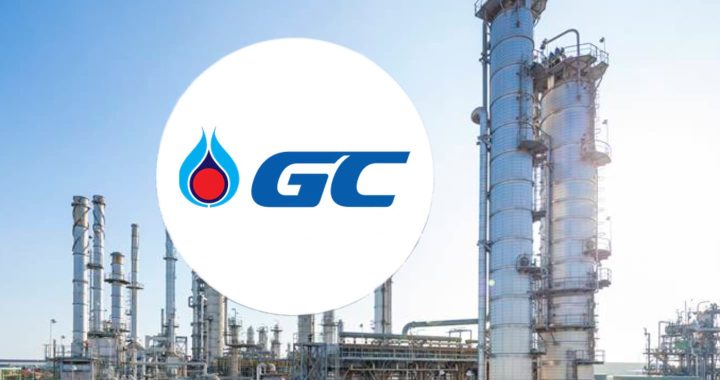SCB CIO cautions investors amid ongoing Israel-Hamas conflict

The SCB CIO assesses that the Israel-Hamas conflict remains highly uncertain, despite its current limited scope and the absence of direct hostilities between Israel and Iran. There are currently no export restrictions for oil producers in the Middle East. However, investments face heightened geopolitical risks and inflation risks, including rising bond yields.
The Fed is anticipated to start sending clear signals to halt interest rate hikes at its November 1 meeting, as several Fed leaders believe that current policy interest rates and bond yields are sufficiently high to potentially slow down the economy. In light of this, the SCB CIO recommends a cautious investment approach, with a focus on high-quality assets in the commodities category and gradually accumulating US stocks, as their valuations have become more attractive. The trend in the US economy is pointing toward a soft landing, which is anticipated to boost earnings projections for US-listed companies.

Mr. Kampon Adireksombat, First Senior Vice President and Team Head of SCB Chief Investment Office at Siam Commercial Bank, has noted that the ongoing conflict between Israel and Hamas, the armed group seeking the liberation of Palestine, remains highly uncertain. However, when compared to the Yom Kippur War in 1973, three significant differences emerge: 1) This conflict involves Hamas, comprising around 30,000 armed soldiers, unlike the 1973 situation when it was a collaboration between the Egyptian and Syrian armies targeting Israel; 2) The United States has expressed support for Israel while also attempting to engage with leaders from various involved countries for negotiations. This contrasts with 1973 when the U.S. sent air forces to support Israel; 3) Middle Eastern countries within the OPEC group, major global oil exporters, have not shown any indications of restricting oil exports. This is in contrast to 1973 when the group imposed an oil export boycott on countries supporting Israel, triggering a global energy price crisis.
The SCB CIO has assessed the potential outcomes of this conflict in three scenarios: 1) Confined War: The conflict remains limited to the Gaza Strip, Israel, and the surrounding borders, without spreading to other countries. In this scenario, there might be restrictions on Iran’s oil exports; 2) Proxy War: The conflict extends to neighboring countries like Lebanon and Syria, which house Iranian-backed militias. This could transform the conflict into a proxy war between Israel and Iran; and 3) Direct War: The conflict escalates into a direct war between Israel and Arab nations led by Iran. In this scenario, there may be restrictions on oil exports from major Middle Eastern exporters.
The SCB CIO assesses that there is a 40% likelihood of war occurring in the first scenario, which would impact global oil prices, potentially causing an increase of approximately USD 4 per barrel. This increase would be attributed to a political risk premium, while inflation and the state of the world economy remain reasonably stable. In the second scenario, there is also a 40% probability of occurrence, which could result in a more substantial spike in world oil prices, potentially rising by USD 8 per barrel. Consequently, the global oil market is expressing concerns, although panic has not set in. The third scenario, with a relatively modest 20% chance of happening, is noteworthy due to its potentially severe impact on world oil prices. In this case, there may be a rapid short-term increase, possibly reaching around USD 64 per barrel.
SCB CIO anticipates that, in response to these heightened geopolitical and cost-push inflation risks, the Fed will likely commence sending clear signals to halt interest rate hikes at its meeting on November 1. Recent statements from various Federal Reserve branch presidents indicate that the policy interest rate and current bond yields are at a level that could prompt an economic slowdown. Consequently, SCB CIO maintains the view that the Federal Reserve will keep the policy interest rate within the range of 5.25% to 5.50% and begin reducing interest rates by the end of the third quarter of 2024, aiming for a range of 4.50% to 4.75% by the end of 2024.
SCB CIO also recommends quality assets during periods of high interest rates and escalating geopolitical risks. Although the recent conflict was comparatively less intense, drawing lessons from the Yom Kippur War of 1973, it had far-reaching repercussions on the investment landscape. It profoundly impacted various sectors, including the oil market, the global economy, the money market, and the worldwide capital market, ultimately leading to a substantial decline in the prices of risky assets, notably the stock market, over the six months following the conflict. The surge in oil prices accelerated inflation from the supply side as well. During that time, the price of oil surged from USD 4.6 per barrel to USD 15.5 per barrel within just six months. This rapid increase in oil prices triggered an inflationary spike, particularly in the United States, where inflation surged from 3% to 12%. This, in turn, led to an increase in US bond yields and a rapid appreciation of the US dollar index.
To mitigate geopolitical risks, SCB CIO recommends diversifying investments into commodities and approaching investments in risky assets with caution. Additionally, the outlook for US stocks has been adjusted to Slightly Positive (from a previous recommendation of ‘Hold’) due to the US stock market’s valuation reaching an attractive level. The S&P 500’s five-year forward P/E ratio, which peaked at 19.0 times in July 2023, has since decreased to 17.25 times, with a relatively low volatility of -0.4 standard deviations. Furthermore, factors such as expectations of the Fed halting interest rate hikes and the US economy possibly experiencing a soft landing have contributed to this adjustment. Consequently, an improving trend in earnings estimates for US-listed companies is expected.
In the latest overview of third-quarter 2023 operating results for S&P 500-listed companies (as of October 25, 2023), it was observed that earnings reports had been released by 29% of all companies, with 78% having already disclosed their results. These reports generally exceeded analysts’ expectations, with particularly strong performances in the IT, Health Care, and Consumer Staple segments. Notably, companies in the Mega Cap 10 group, characterized by the largest market capitalization, outperformed analyst expectations.







































